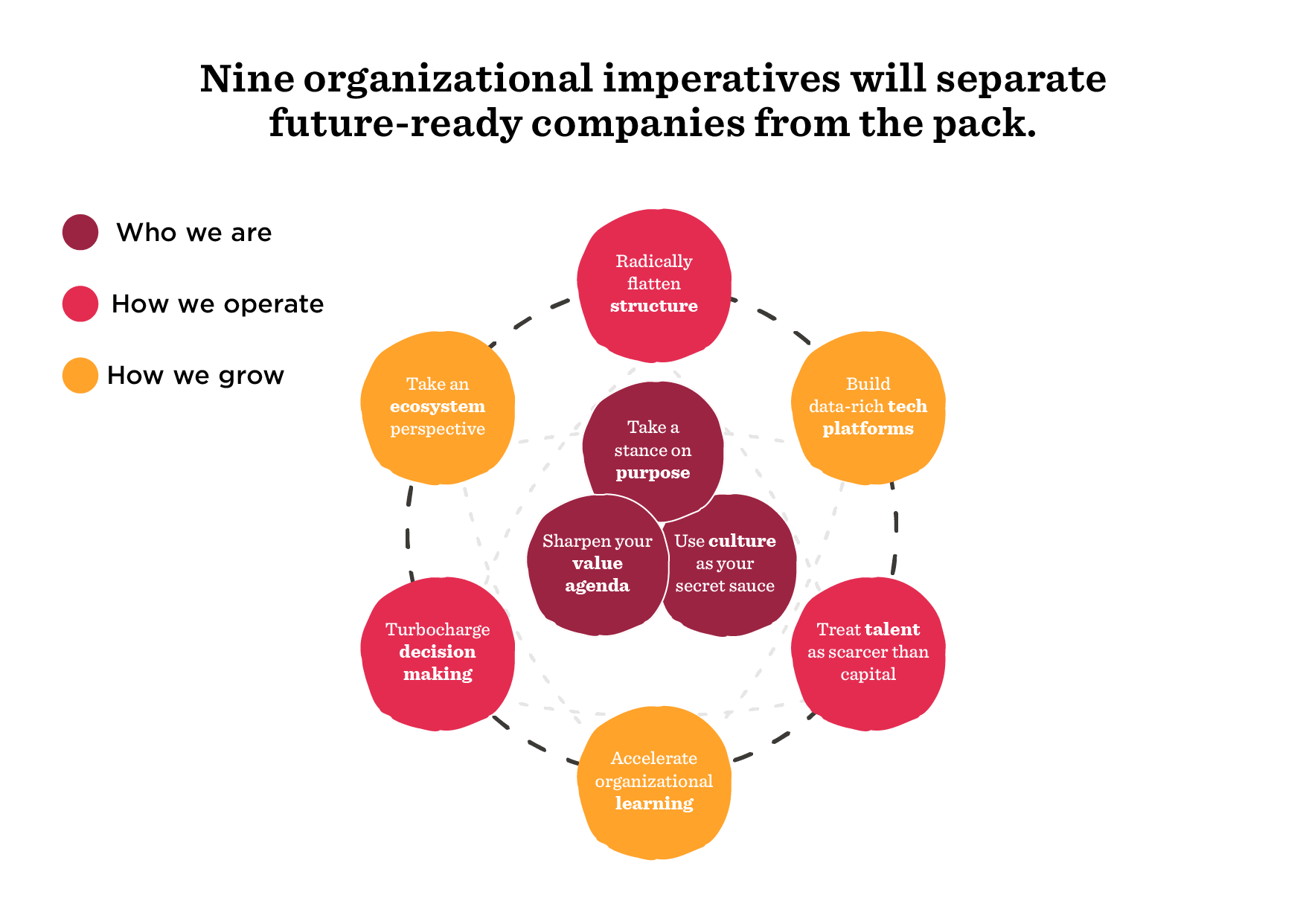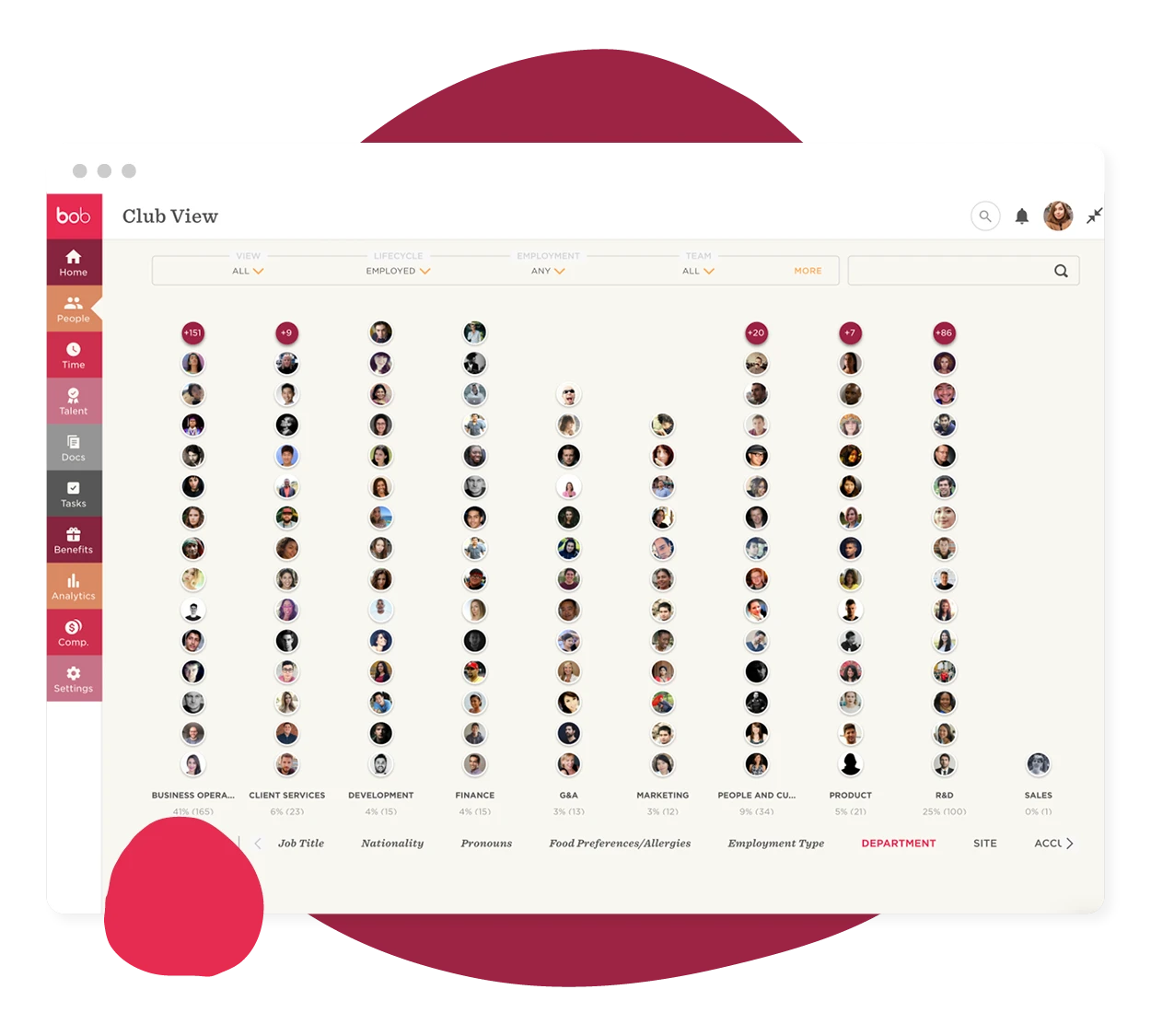The idea that most organizations need—and employees crave—a more dynamic model for work is not new. But as findings from McKinsey illustrate, the pandemic has served to intensify the need for a new model.
“[The pandemic] has created profound and immediate changes to how societies operate and how individuals interact and work. We have all witnessed an at-scale shift to remote work, the dynamic reallocation of resources, and the acceleration of digitization and automation to meet changing individual and organizational needs.”
CHROs and their C-Suite peers understand that they must re-energize their people and organizations in a post-pandemic world of work. Among the top global concerns for the C-Suite, according to the C-Suite Challenge™ 2021 from the Conference Board, are:
- COVID-19
- Recession risks
- Recruiting and retaining top talent
- Accelerating digital transformation
“As leaders take action to re-energize their people and organizations, the most forward-looking see a larger opportunity—the chance to build on pandemic-related accomplishments and reexamine (or even reimagine) the organization’s identity, how it works, and how it grows,” according to Organizing for the future: Nine keys to becoming a future-ready company, a report published by McKinsey.
Nine organizational imperatives for the C-Suite
McKinsey’s nine organizational imperatives center around three key themes, each of which interacts with human resources:
- Identify: who we are
- Agility: how we operate
- Scalability: how we grow
These nine imperatives may seem daunting for HR leaders and the C-Suite. But they aren’t new.
“Throughout the pandemic, HR has played a central role in how companies build organizational resilience and drive value,” according to McKinsey. “CHROs and their teams can continue on this path by connecting talent to business strategy and by implementing changes in the three core areas of identity, agility, and scalability, as well as the nine imperatives that flow from them.”
Even after the pandemic subsides, CHROs can and must help the C-Suite embrace new working methods, including rapid iteration and embracing agile and digital competencies. There’s good news — HR technology is an essential tool for leaders who want to move their organizations forward in both good times and bad.

Human Resource Executive reports that survey data from software firm Sage indicates that “81% of C-suite leaders say they would not have been able to operate effectively during the pandemic without HR technology. Meanwhile, 89% of the C-suite and 83% of HR leaders say HR technology enabled them to be more flexible and responsive to changing needs while helping their businesses become more resilient.”
Indeed, with the help of HR technology, the C-Suite can address these key areas to tackle the nine imperatives required for their organization’s success:
- Engagement and purpose
- Skills and abilities
- Team structure
- Decision making
- Talent
This guide will walk you through the specific ways the C-Suite can put HR technology to work.
Engagement and purpose
If the C-Suite is to “take a stance on purpose,” as McKinsey advocates, these leaders need to have a direct connection and understanding with organizational and employee engagement. They must be able to measure and gather insights. HR technology offers the mechanisms to do so.
Surprisingly, although 64% of HR leaders say “an always-on feedback tool is essential to an engagement listening program, only 20% have this kind of tool in place,” according to the Achievers Workforce Institute’s 2021 Engagement and Retention Report.
Without a tool to capture more than anecdotal feedback, the C-Suite can’t get a pulse on engagement and a sense of purpose within their workforce. Fortunately, many organizations at least use annual surveys (40% according to the same report) to gather feedback. But by the time the results are in, it’s often too late to act on the input.
It’s time for the C-Suite to acknowledge that “always-on feedback” is not only necessary, it’s also possible. With the right HRIS, the C-Suite can give employees a platform to provide ongoing feedback. Then, leaders can leverage that real-time feedback to understand employees’ attitudes and perceptions. Only then can they move towards better engagement and purpose among their workforce.
Skills and abilities
When the C-Suite is ready to “accelerate organizational learning,” the value of HR technology can’t be minimized. It’s an important piece to enhance employee skills and abilities. Not only does an HRIS empower organizations and managers to train employees as needed, but it also helps increase visibility as to who brings what skills when they’re hired.
As Henry Ford allegedly said, “The only thing worse than training your employees and having them leave is not training them and having them stay.”
Wise leaders in organizations such as Microsoft have made dramatic shifts in accelerating organizational learning to improve skills and abilities. They have shifted from a “know it all” to a “learn it all” environment, with open learning days, informal social learning opportunities, and data to examine internal career paths.
In its 2021 HR Priorities Survey, Gartner found that “68% of HR professionals will be focused on enhancing critical skills and competencies in the workforce next year, with a particular emphasis on digital skills.” Meanwhile, the Society for Human Resource Management (SHRM) reports that 22% of HR professionals in the U.S. plan to invest in HR technology that supports reskilling and mobile learning.
Especially with a shift to remote work, this type of upskilling is scalable and possible only with the support of HR technology. The C-Suite is wise to consider the best solutions that technology has to offer to increase the abilities of its workforce.
Team structure
One of McKinsey’s recommended strategies for the C-Suite is to flatten structure radically.
“Future-ready organizations,” they report, “structure themselves in ways that make them fitter, flatter, faster, and far better at unlocking considerable value. Their goal isn’t to eradicate hierarchy so much as make it less important as an organizing mechanism. They flatten the organization and adopt the simplest P&L structure possible, reinforcing business objectives with clear, strong performance management and other mechanisms.”
If an organization is still managing its organizational structure in spreadsheets, databases, or whiteboards, this type of approach becomes exhausting and less-than-nimble. Fortunately, HR technology can solve this issue. Data within an HRIS should allow the C-Suite, HR, and everyone access to the data, a clear graphical representation of the organizational structure. Members of the C-Suite should be able to easily see employees across all departments, as well as their reporting structure and overall hierarchy.
With this data, they can radically flatten the structure or take any necessary steps to ensure the business structure is as efficient and effective as possible. They can focus on who works on what with whom. They can reduce spans of control and rethink teams.
Decision making
These changes in structure will hopefully lead to another critical element for a dynamic model of work: decision making. McKinsey found “organizations that consistently decide fast and well are…more likely to outperform their peers. However, only one in three survey respondents said their organizations consistently make fast, high-quality decisions.”
One of the problems the C-Suite may be facing regarding HR or employee-related decisions is that they don’t have the data they require to analyze and review to make decisions. Companies agree that data is key to decisions: 91% of companies say that “data-driven decision-making is important to the growth of their business, but only 57% of companies are putting it into practice.”
Your HR teams shouldn’t lose a day a month to gather data for the C-Suite. HR technology offers HR and the C-Suite the data and analytic solutions they need. Real-time data and reports provide essential information such as salaries across the company as well as monthly changes, contractor payments, financial changes, and time off records. When you need to make an important management decision, an HRIS provides real-time data and reports ready for analysis. Tools such as filters allow the C-Suite to splice and dice the data to spot trends for any period.

Talent
Talent is scarce. Most companies are turning to HR technology to help them overcome the challenge of finding the right talent. According to CNBC, more than 95% of Fortune 500 companies use an applicant tracking system to streamline recruiting. And the majority of recruiting professionals (68%) say improving recruiting requires an investment in recruiting technology.
To enable a shift in an organization’s approach to acquiring and retaining talent, McKinsey advocates for “rigorous” talent management. The key to this approach is “building an analytics capability to mine data to hire, develop, and retain the best employees.”
For this strategic and analytical approach to take hold, HR business partners must have the HR technology they need to engage with business leaders for regular reviews and updates regarding the status of talent across the organization.
Finding fiscally responsible solutions
While the C-Suite must understand the benefit and value they can gain from HR technology, that understanding must be balanced with fiscal prudence.
“Companies are throwing money at HR tools right now,” according to Josh Bersin. “As they search for ways to transform their workforces, make people more productive, and improve quality of hire, skills development, and employee engagement and retention.”
Some reports indicate that companies have as many as 11 core HR systems. These systems span the needs of recruiting, learning, communications, compensation, and payroll. With so many systems, the average price per employee per year can become unreasonable.
Bersin suggests the following to ensure the C-Suite, and the organization reaps the benefit of their HR tech investment:
1. Clarify the problems you want to solve upfront
2. Focus on the employee experience—that includes the C-Suite
3. Partner closely with IT and senior business leaders for a strategic solution
4. Create a senior governance team to manage the HR tech process
HR technology investments can deliver a high benefit, but they also carry some risk. To ensure the maximum benefit from your investment, CHROs must take the time to find fiscally responsible solutions and carefully select HR technology partners and systems.
Recommended For Further Reading
Conclusion
As companies scramble to adapt, evolve, and innovate, HR must not lose sight of the critical issues facing almost every organization and how those issues impact the C-Suite. As business models change rapidly and the complexity of issues related to the workforce increase, HR holds significant responsibility for partnering with and supporting the C-Suite when it comes to HR technology solutions.
“[HR professionals] have more data at their fingertips than they’ve ever had previously, so they have to take ownership of that data,” according to Stacey Harris, vice president of research and analytics at Sierra-Cedar. “They have to take ownership of that role that the technology is playing inside the company and not think of it as just a features and function tool and think of it much more as a tool used for data management to run their business—and their business is the employees of the company.”
HR has played a central role in how companies build organizational resilience and drive value throughout the pandemic. CHROs and their teams can continue on this path by connecting talent to business strategy and by implementing changes in the three core areas of identity, agility, and scalability, as well as the nine imperatives that flow from them.
Today nearly every business issue is somehow dependent on technology—including challenges related to human resources. While the challenges may be many, they are consistent around the world. The C-Suite and CHROs alike should feel confident that the HR challenges they’re facing can be addressed and even transformed by technology.

Meet Bob
The right technology is essential.
More and more companies are putting technology at the top of their list when improving the employee experience. To attract and keep top talent, organizations must make it easy for employees to interact and engage with their work and company culture.
Here are some of the ways HiBob’s platform can help you engage new hires, re-engage current people, and attract better people by putting your technology to use:
- Advanced analytics and KPI reporting
- Collaboration tools
- Surveys
- Checklists
- Time and attendance
- Appreciation tools
- Performance management
